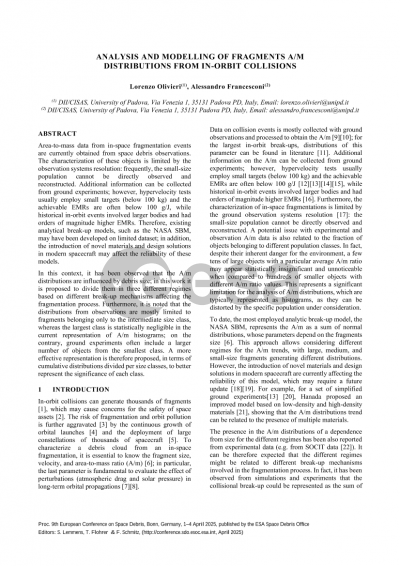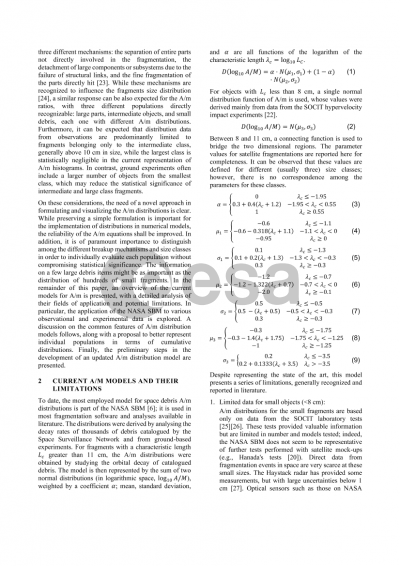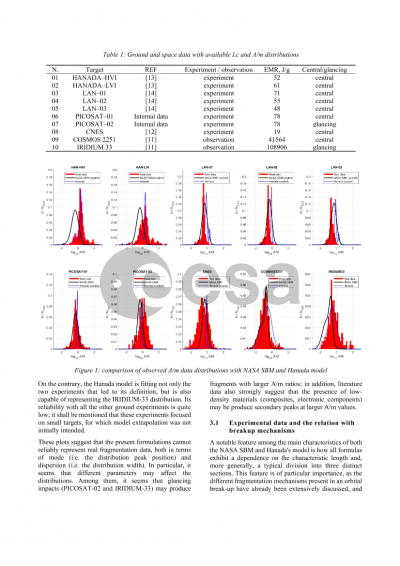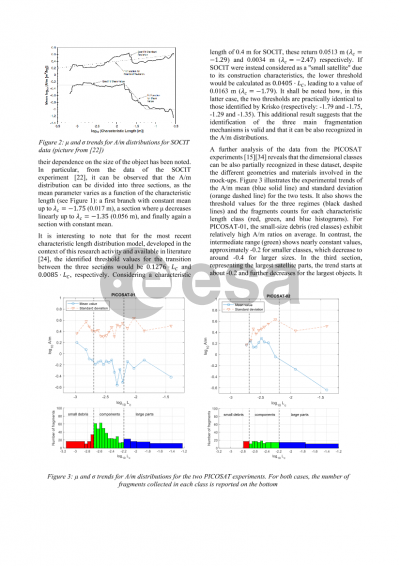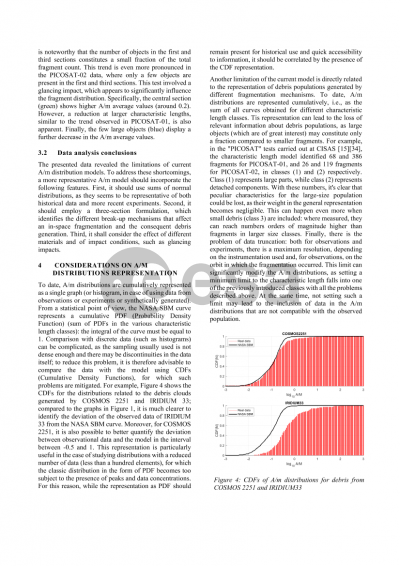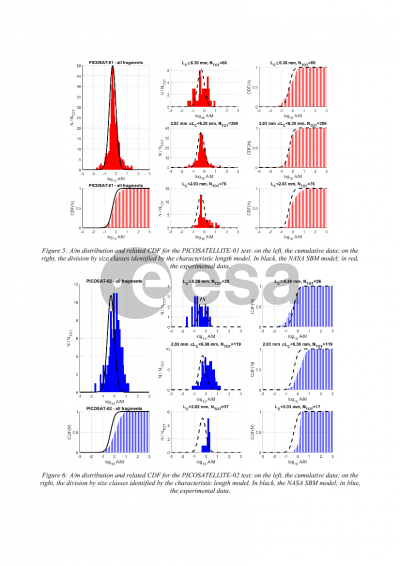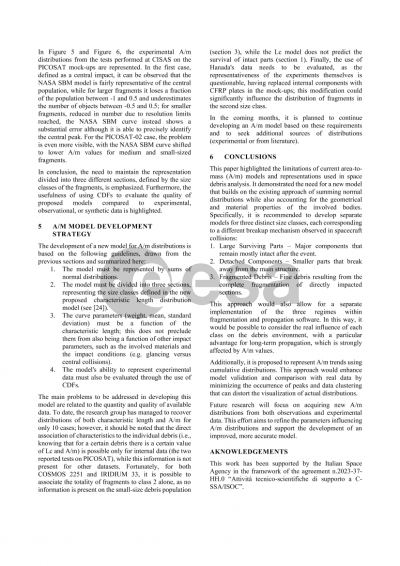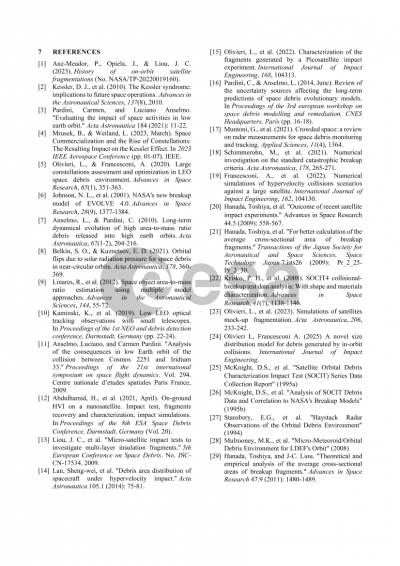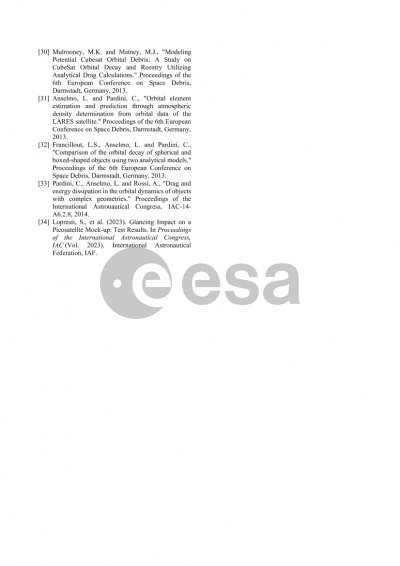Document details

Abstract
In-orbit collisions can generate thousands of fragments, which may cause concerns for the safety of space assets. The characterization of the resulting debris cloud can be performed if the fragments size, velocity and area-to-mass are known; in particular, the last parameter is fundamental to evaluate the effect of perturbations (atmospheric drag and solar pressure) in long-term orbital propagations. Data on collision events is mostly collected with ground observations and processed to obtain the fragments area-to-mass; for the largest in-orbit break-ups, distributions of this parameter can be found in literature. Additional information on the area-to-mass can be collected from ground experiments; however, hypervelocity tests usually employ small targets (below 100 kg) and the achievable EMRs are often below 100 g/J, while historical in-orbit events involved larger bodies and had orders of magnitude higher EMRs. Furthermore, the characterization of in-space fragmentations is limited by the ground observation systems resolution: the small-size population cannot be directly observed and reconstructed.
To date, the most employed analytic break-up model, the NASA SBM, represents the Area-to-mass as a sum of normal distributions, whose parameters depend on the fragments size. This approach allows considering different regimes for the Area-to mass trends, with large, medium, and small-size fragments generating different distributions. However, the introduction of novel materials and design solutions in modern spacecraft are currently affecting the reliability of this model, which may require a future update.
In this context, different regimes in the fragmentation processes have been observed also on size distributions, leading to the hypothesis that this behaviour may be related to different break-up mechanisms affecting the fragmentation. As reported in this paper, this assumption is supported by literature, leading to the identification of three size classes related to the different mechanisms. Furthermore, it is noted that the distributions from observations are mostly limited to fragments belonging only to the intermediate class, whereas the largest class is statistically negligible in the current representation of area-to-mass histograms; on the contrary, ground experiments often include a larger number of objects from the smallest class. The future development of area-to-mass models shall consider these issues and define a more effective representation of the different fragment families.
Preview
